Working in an area that takes visual queues from mid-20th c. Minimalists and contemporary artists investigating various modes of seeing, Michelle Bolinger produces paintings that are visual conundrums that merge fields of color with defined forms, geometric and circular. This week the COMP Magazine visited Bolinger in her Logan Square studio to discuss the creation of surface tension on a 2-dimensional plane, painting techniques and the imperfections one encounters in her artworks, visceral strategies in non-narrative representation, and her long fascination with art history.
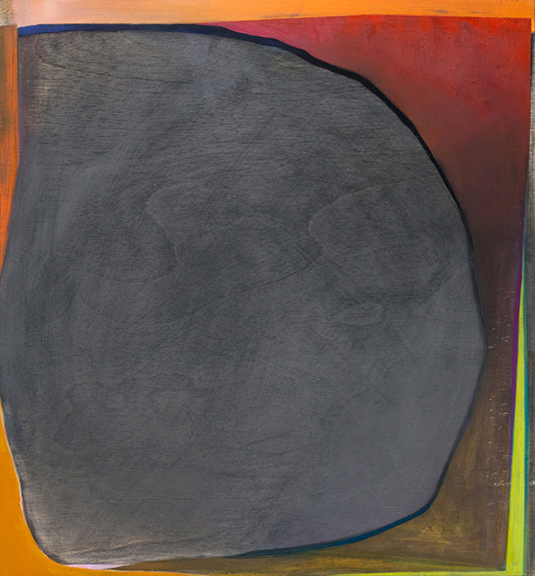
Michelle Bolinger, Balloon, 2018, Oil and graphite on board, 15 x 14 inches
Lets begin with a little background. You studied drawing and painting at Indiana University in Bloomington, then at the University of Washington in Seattle. These are fairly different environments. I’m wandering if you can share with us any early experiences at these institutions or other activities (or people) who prompted your sustained studies in painting?
While there was certainly a landscape and cultural shift, the learning environment was similar in many ways. There were a handful of art schools that most people from IU attended. The University of Washington was one of those schools. I had a few peers from IU with me before, during and after my time at UW and I maintain valuable friendships with each one of those artists today. I actually shared a studio with one of them here in Chicago for 6 years (shout out to Bradley Biancardi – an excellent painter). That was a great time. We obviously had a lot to talk about knowing so much about the evolution of each others work.
I have always wanted to be a painter. So, for graduate school I wanted a painting program that was situated in a larger, multi-disciplinary, conceptual program and The University of Washington offered me that. I could have gone any route, but I stuck with painting.
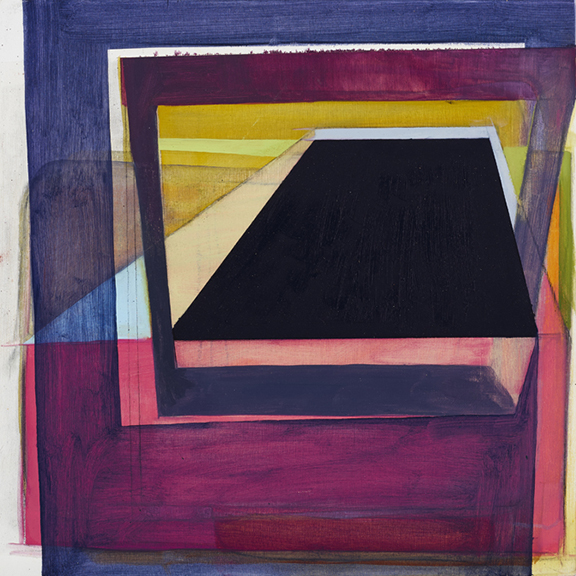
Michelle Bolinger, Black Box, 2017, Oil on board, 12 x 12 inches
You noted your fascination with creating optical surface tension when producing your paintings. Can you perhaps expand upon this thought through walking us through your applied and conceptual process?
I like the limitation of painting. Simply put, it’s color on a (usually) two-dimensional surface. You can make it illusionistic or it can remain flat and I like my paintings to teeter on that line in between. For example, when I add an element that creates clear pictorial depth, like a shape being bigger and overlapping a smaller shape, I will counter that illusion in some way. I might make the background color more saturated or the paint substantially thicker so its physical presence can challenge the pictorial illusion of depth and add tension. I want them oscillate between being an object and a window.
One thing that may not be apparent in images of my paintings is how sculptural and manipulated the surface is. I mostly work with very thin paint on panel and sandpaper. I often sand through the gesso or round off corners of the painting with a power sander. I carve into them. They are not delicate. It’s very important to me that they look labored and have an imbedded history via process. The resultant image is found through a long dialogue of layering, removing, looking and searching.
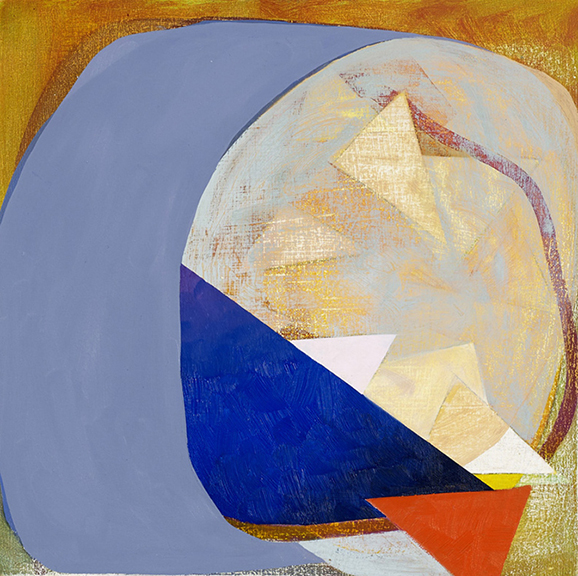
Michelle Bolinger, Bucket, 2015, Oil ob board, 12 x 12 inches
On one level I see your practice rooted in formal investigations that are aligned with a long history of non-narrative and visceral art practitioners, yet you, at times, deviate through titling the paintings (e.g., Crescents, Bucket, Color Trap). I’m wandering if you can discuss this aspect of your work. Specifically, where does the unrecognizable reveal the recognizable when finalizing a piece?
I am currently pursuing various formal investigations, but I don’t feel like my work is rooted that genre. Like many artists, I arrived at my current body of work via years and years of prior making. I’ve painted figures, still life’s and landscapes over the years and slowly I just edited out what was unimportant to me. The narrative left, I removed direct references and the forms became more and more minimal. I’d say my practice is rooted in an investigation of the medium itself and my core interests of color and surface.
And I have to confess, I don’t really like the word formal. It’s seems stiff, cold and calculated to me. My process and paintings are opposite of that. They have awkward gestures, irregular edges, handmade qualities and imbedded mistakes. This makes them more human and playful to me.
I find titling really hard. I am happiest when the titles make just the slightest suggestion at a source, but remains open for interpretation. Color Trap has a contained form, a sense of closing and central radiant color. I often compose in reference to the edge of a painting; a container for the color and marks I lay inside. That is why I often use words like Bucket or Harness. I titled a show at Roman Susan in 2015 Containers for Places.
As for revelation of finish, each painting is different. Most are a struggle and on rare occasion one is easy.
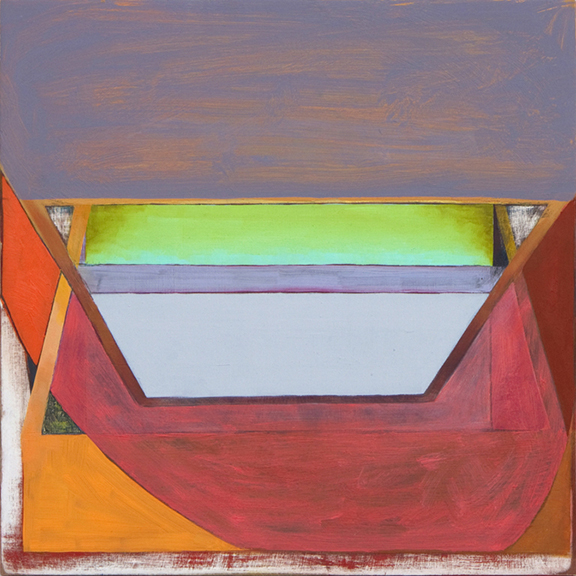
Michelle Bolinger, Color Trap, 2015, Oil on board, 12 x 12 inches
You almost “glowed” when our conversation shifted into discussing Italian classical painting. You’ve travelled in Italy, experienced a number of masterworks firsthand, and hold a fondness for art history. Can you discuss this interest and how it informs your contemporary investigations?
Perhaps that is because I need to go on vacation! What can I say… I spent time in Italy when I was just starting my BFA program and I was an impressionable young artist. But seriously, when you see paintings by true masters in person, they have physical presence that is undeniable. When I saw Velazquez’s Las Meninas at the Prado it was completely transfixing. You can feel the subjects breathing! Pontormo has made me cry.
It’s saddens me if I learn that another painter has no interest in art history and thinks it irrelevant. It’s not possible for what came before to be irrelevant. And why deny such a rich and vast resource? I want to look at Giotto, Paul Klee and Jonas Wood. It’s all painting. And I think that contemporary art can be a transformative experience too. Seeing artists like Agnes Martin and Sol Lewitt at Dia Beacon, for example, is a completely ideal and meditative. When you see truly masterful art, of any era, it’s an experience you carry with you.
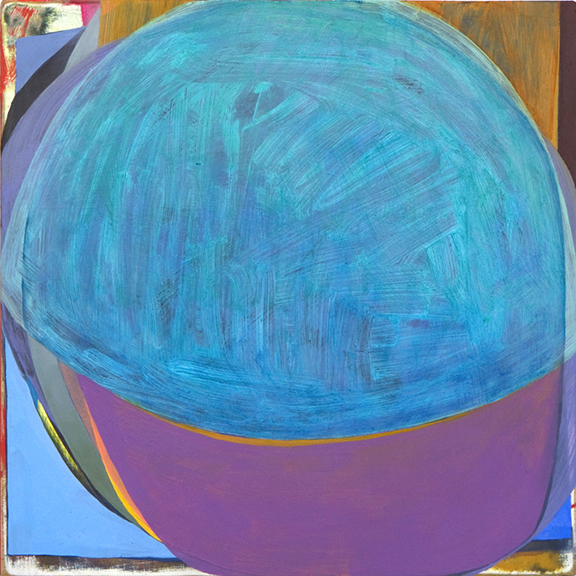
Michelle Bolinger, Cosmic Capsule, 2015, Oil ob board, 12 x 12 inches
What do you value most in your painting practice?
I’m not really sure how to answer this. I don’t think there is any single thing to value more or less than another. I’m happy with what I’ve done and the work I am doing now. That’s all I can ask for.
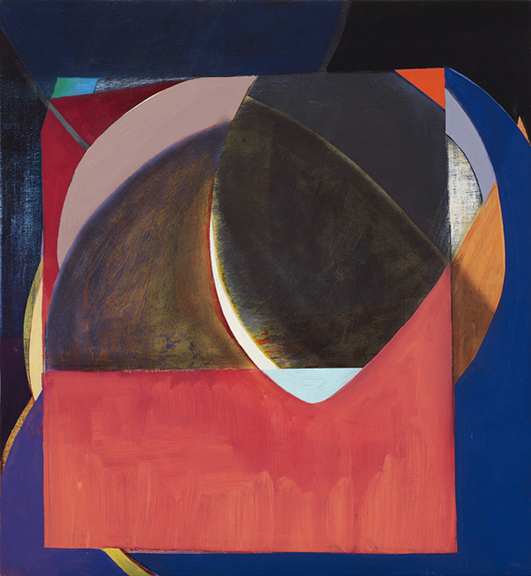
Michelle Bolinger, Crescents, 2017, Oil and graphite on board, 15 x 14 inches
What’s the plan for the remainder of 2018? Do you have any specific goals in terms of calling closure to a series of paintings? Any upcoming exhibitions or sojourns to Italia?
I have been making a series of graphite powder drawings for a couple years now. I am trying to combine what I like about those drawings with some of the color I use in the paintings. I am currently experimenting with doing this on paper and panel and seeing what happens.
No trips planned currently, but hopefully soon!
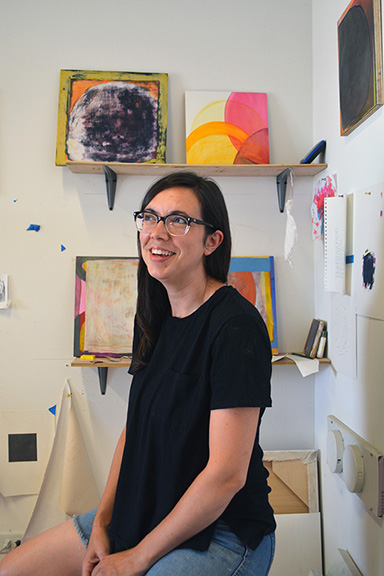
Michelle Bolinger, painter, Chicago, 2018
For additional information on the aesthetic practice of Michelle Bolinger, please visit:
Michelle Bolinger – http://www.michellebolinger.com/
New American Paintings – https://www.newamericanpaintings.com/artists/michelle-bolinger-0
New City – https://art.newcity.com/2012/11/06/review-j-clayton-and-michelle-bolingerriverside-arts-center/
AskArt – http://www.askart.com/artist/Michelle_Bolinger/11274068/Michelle_Bolinger.aspx
Additional paintings and drawings by Michelle Bolinger:
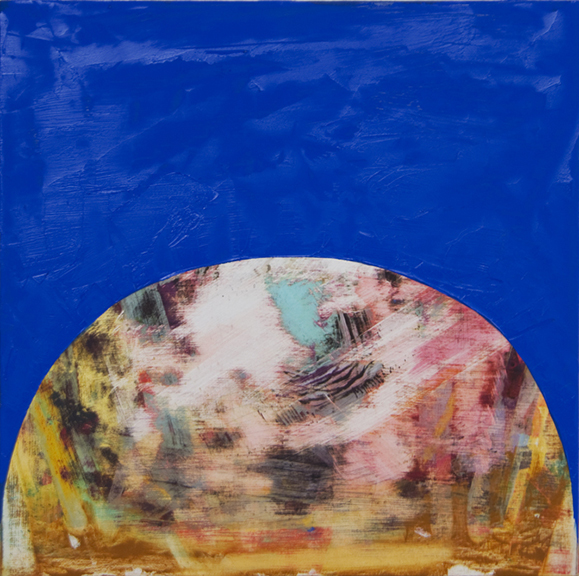
Michelle Bolinger, Half Moon, 2013, Oil on board, 12 x 12 inches
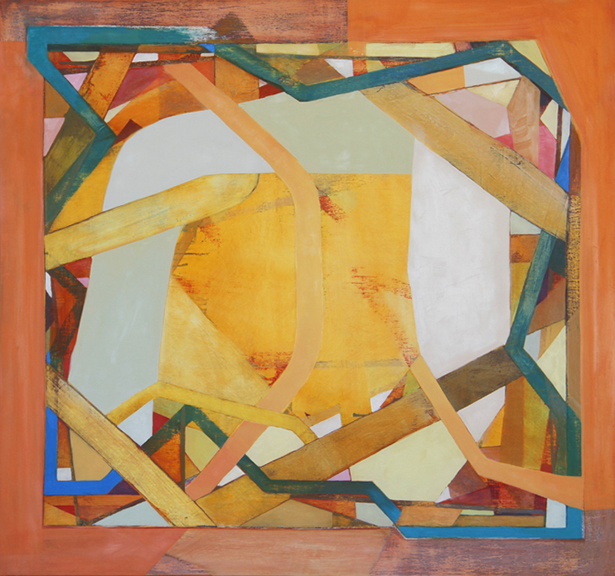
Michelle Bolinger, Tug of War, 2013, Oil on board, 30 x 32 inches
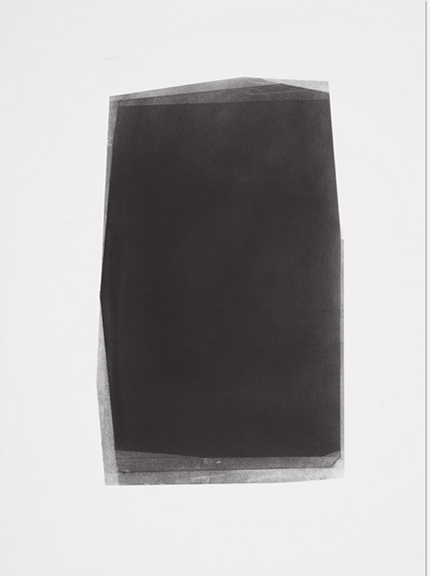
Michelle Bolinger, untitled graphite drawing 1, 2018, Graphite on paper, 30 x 22 inches

Michelle Bolinger, untitled, 2017, Oil and graphite on board, 15 x 14 inches
Artist interview and portrait by Chester Alamo-Costello


